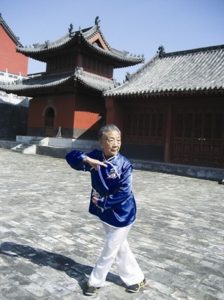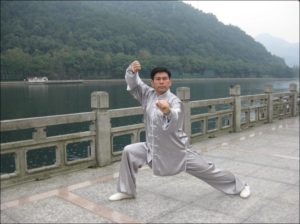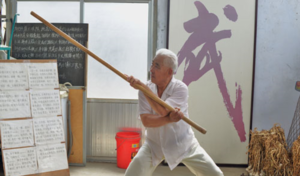The Internal Three Harmonies (内三合) and External Three Harmonies (外三合) are the guiding principles of Da Liuhe Men. The Internal Three Harmonies align the mind, intention, and energy, while the External Three Harmonies synchronize the root, trunk, and tips of the body. Through these harmonies, the art achieves unity and adaptability in techniques, making them fluid, dynamic, and harmonious.”
The Internal Three Harmonies are:
1. The harmony of heart and intention, which ensures alignment without deviation.
2. The harmony of intention and energy, promoting centrality and balance.
3. The harmony of energy and strength, ensuring natural coordination.”
“The External Three Harmonies are:
1. The harmony of hands and feet, ensuring mutual responsiveness.
2. The harmony of elbows and knees, ensuring synchronized movement.
3. The harmony of shoulders and hips, ensuring structural alignment.”*
“When the internal and external harmonies are united, one achieves fluidity and strength, avoiding the weakness of scattered energy. Without the Six Harmonies, the practitioner cannot expect to prevail in combat. If the mind, intention, and energy are aligned internally, and the body moves cohesively externally, the art of Liuhe Quan can truly manifest. Training these harmonies leads to precise strikes and a balanced state, where light force overcomes heavy resistance.”
The Six Harmonies represent a comprehensive framework for the internal and external coordination necessary for mastering Liuhe Quan.
Internal Three Harmonies (内三合):
Heart and Intention (心与意合): The mind must focus and direct intention without distraction, aligning purpose and willpower.
Intention and Qi (意与气合): Intention guides the flow of energy (气, qì) naturally and without force.
Qi and Strength (气与力合): Energy and physical force must act in unison, ensuring efficient, effortless movements.
External Three Harmonies (外三合):
Hands and Feet (手与足合): The hands and feet must act as extensions of each other, synchronized for balance and power.
Elbows and Knees (肘与膝合): The movement of the elbows corresponds to the knees, maintaining a connection between upper and lower body.
Shoulders and Hips (肩与胯合): The shoulders and hips must align to provide stability and maintain structural integrity.
1. Internal and External Synergy:
The harmonies must work together; internal coordination provides the foundation for external movements. A lack of integration results in scattered force (“like loose sand”) and weak techniques.
2. Precision and Responsiveness:
Internal Three Harmonies: Train the mind to focus and respond accurately, ensuring every action is intentional.
External Three Harmonies: Develop physical coordination so movements are precise and effective, avoiding wasted energy.
3. Gradual Development:
Beginners focus on generating significant power from deliberate or direct heavy strikes but as skill progresses, mastery lies in using light, subtle force to overcome heavy resistance.
Unity of Principles and Techniques:
Liuhe Quan emphasizes that techniques (the external) must emerge naturally from the unity of the mind, intention, and energy (the internal).
Harmony and Adaptability:
True mastery lies in achieving a state where internal and external forces work together seamlessly, allowing the practitioner to adapt to any situation with precision and fluidity.
Balance and Transformation:
The art teaches how to balance softness and hardness, lightness and heaviness, ensuring that movements are both powerful and harmonious. The Six Harmonies form the foundation of Liuhe Quan, emphasizing the integration of internal energy and external movements. By achieving unity through disciplined practice, a practitioner transforms their body and mind into a cohesive, adaptable force, capable of precision and power in both training and combat.




